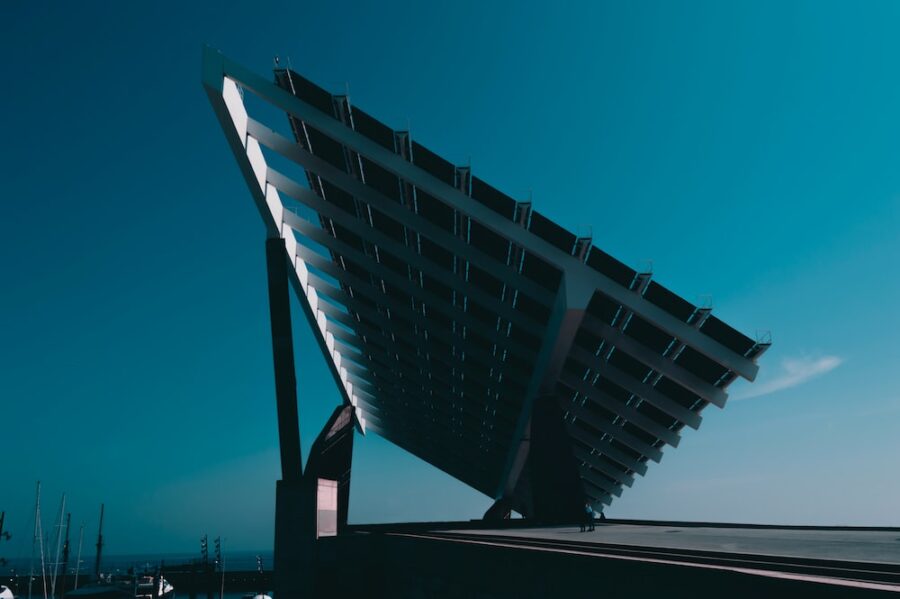5 Easy Steps on How To Install Solar Panels
Going solar has never been easier or more affordable. In just a few years, the cost of solar panels has dropped dramatically, making it a viable option for homeowners and businesses alike. Not only is installing solar panels good for your wallet, it’s also good for the environment.
Solar panels allow you to generate your own electricity, which reduces your reliance on fossil fuels and helps combat climate change. If you’re thinking about going solar, here are five easy steps on how to install solar panels.
1. Research

If you’re considering solar panel installation, the first step is to do your research. You’ll need to consider things like your energy needs, roof type, and budget before moving forward.
Once you’ve done your research and have a better understanding of what’s involved, you can begin shopping for solar panels. There are many different types and styles available, so it’s important to compare options and find the best fit for your home.
When you’re ready to install the panels, it’s important to follow the instructions carefully. This will ensure that they’re installed properly and will work efficiently. With a little planning and effort, you can enjoy the benefits of solar power in no time.
2. Buy the Right Equipment
If you’re interested in installing solar panels, the first step is to purchase the right equipment. This includes solar panels, an inverter, batteries, and a charge controller. You’ll also need some basic tools, like a drill, screwdriver, and wrench.
When choosing solar panels, it’s important to consider the size of your home and your energy needs. Solar panels come in a variety of sizes and capacities, so you’ll need to select the ones that are best suited for your needs. Inverters convert the DC power from the solar panels into AC power, which can be used to run appliances in your home. Batteries store excess energy for later use, and charge controllers regulate the flow of electricity from the solar panels to prevent overcharging.
Once you have all of the necessary equipment, you’ll need to follow some basic steps to install the system. First, you’ll need to mount the solar panels on your roof or another sunny location. Next, connect the inverter and batteries to the solar panel system. Finally, hook up any appliances or devices that you want to run off of the system.
With a little bit of effort, you can easily install a solar panel system in your home. By following these simple steps and using quality equipment, you can enjoy clean, renewable energy for years to come.
3. Find the Perfect Location

When it comes to installing solar panels, one of the most important factors to consider is the location. You’ll want to find a spot on your property that gets plenty of sunlight, as this will ensure that your panels are able to generate enough power.
Another thing to keep in mind is that you’ll need to have a clear line of sight to the south, as this is where the sun will be coming from. If there are trees or other obstructions in the way, they could block out some of the sunlight and reduce the effectiveness of your panels.
Once you’ve found the perfect spot for your panels, it’s time to get started on the installation process!
4. Install the Panels
Assuming you have already purchased your solar panels, the next step is to install them. The specifics of this will vary depending on the type of panel and mounting system you have, but there are some general tips that will help make the process go smoothly.
1. Start by choosing a sunny spot for your panels. You’ll want to make sure they’re in an area that gets plenty of direct sunlight throughout the day.
2. Once you’ve found the perfect location, clean the surface where the panels will be mounted. This will help ensure a good connection between the panels and the mount.
3. If you’re using a ground-mounted system, excavate a hole for each post and set them in place according to your plans. Then, fill in around the posts with concrete to secure them in place.
4. For roof-mounted systems, it’s important to make sure the roof is strong enough to support the weight of the panels. If necessary, reinforce the structure before proceeding with installation.
5. To install the actual panels, first attach any brackets or rails that may be required by your particular system. Then, carefully set each panel in place and secure it according to the manufacturer’s instructions.
6. Finally, connect the panels to your home’s electrical system according to local building codes and standards. Once everything is properly wired up, you should be able to start generating power from your new solar array!
5. Monitor Progress

As you can see in the photo, our solar panel system is up and running! Monitoring your progress is important to ensure that your solar panels are working as efficiently as possible. There are a few key things you should keep an eye on:
– The amount of sunlight hitting your panels each day
– The output of your panels (measured in watts)
– Your energy consumption (measured in kilowatt hours)
You can monitor all of these things using a solar monitoring system like Enphase Enlighten. This will give you real-time data on the performance of your system so you can make changes as needed.
Conclusion
Congratulations on taking the first step towards energy independence by learning how to install solar panels! With these five easy steps, you’ll be on your way to generating your own renewable energy in no time. Not only will you be saving money on your electricity bills, but you’ll also be doing your part to help the environment. So what are you waiting for? Get started today and start generating your own power!
